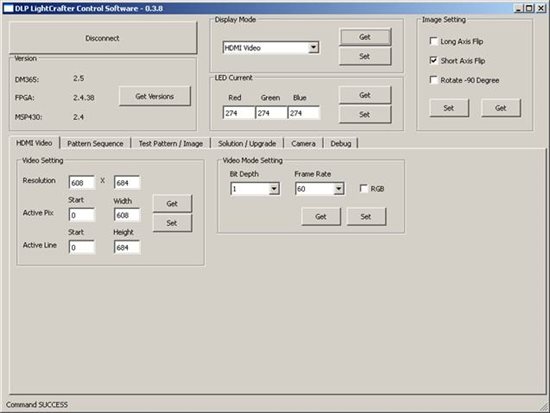Hi,
My objective is to have two projectors synchronously displaying 1-bit external patterns at 1440 Hz.
My initial approach would be to get two DLP LightCrafters, connect both projectors to a dual-head GPU or dual-head module (i.e. Matrox DualHead2Go), enable VSYNC, set both projectors to external pattern mode through USB, and feed patterns as per usual. Can I assume some level of synchronicity between the two projectors? That is to say, if both projectors receive the same 24-bit frame, are the individual DMD patterns from both projectors, at any given time instant, identical? If not, can I guarantee some maximum amount of latency between the two projectors?
Also, I'm curious whether similar steps can be taken to synchronize two Pico v2s.
Best regards,
Matt


